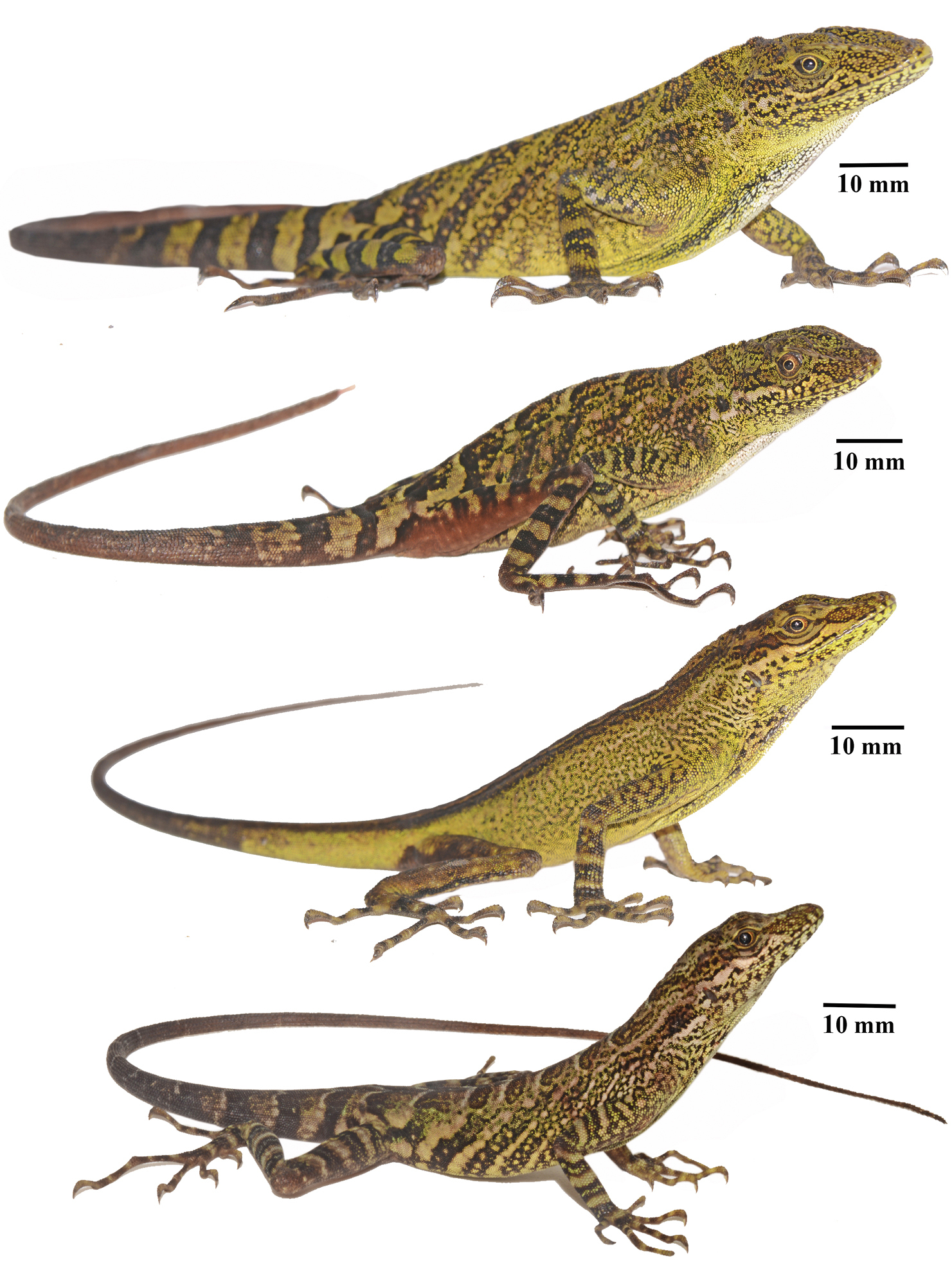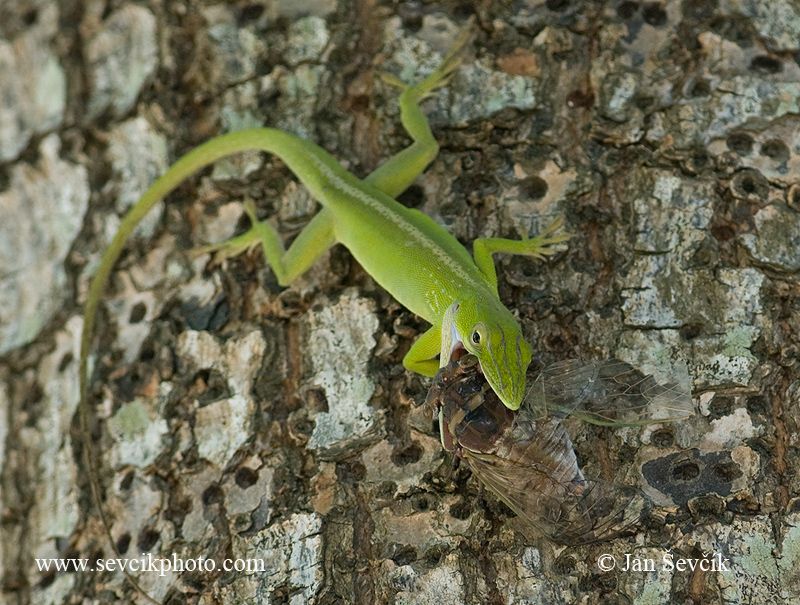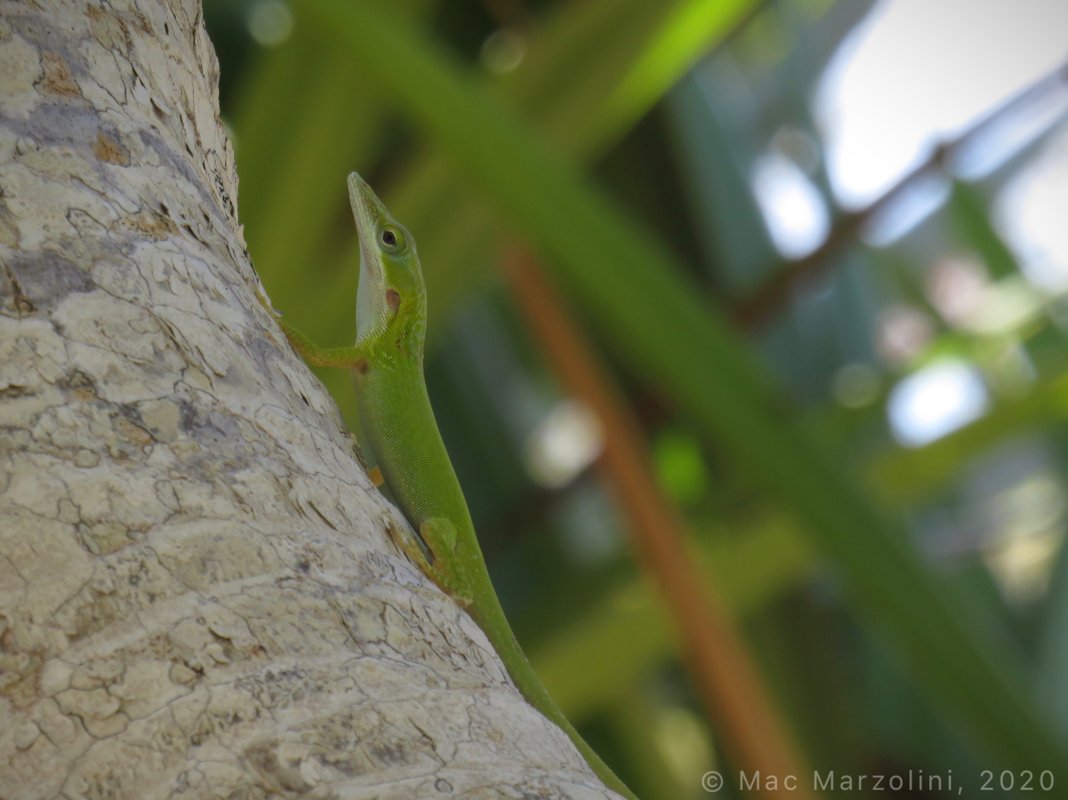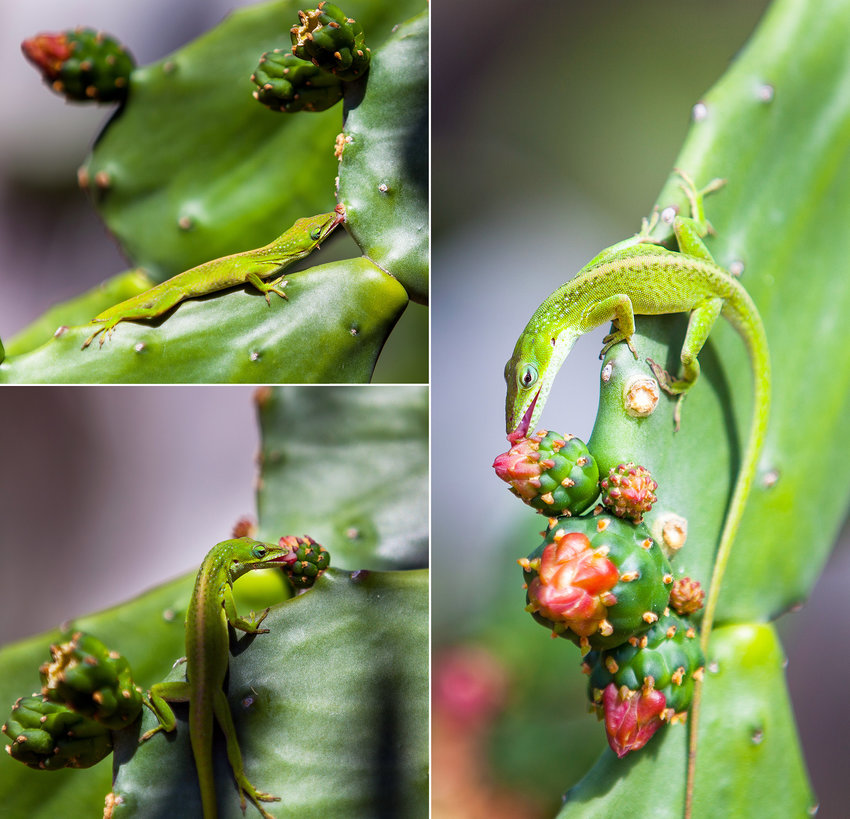
Photo by Pascal Samson, iNaturalist
Hey!
It is still the best month ever, Halloween, and so we are continuing with anoles that channel that.
Today, is an anole masquerading as another lizard, Anolis barbatus.
Anolis barbatus is one of six species of anoles in the Chamaeleolis clade. This clade of anoles, all from Cuba, are called False Chameleons… because they look like chameleons. Bet you weren’t expecting that.

A. chamaeleonides by Alex Alfil, iNaturalist
False Chameleons have independent eye movement much like true Chameleons, and additionally have that bony casque. They have very cryptic colouring which helps them blend into the twigs they spend time on, and move slowly while swaying in order to mimic a twig swaying in the wind. But they can move fast to get away from persistent negative stimulus. They are also fairly large anoles, but despite this spend most of their time on twigs and small branches. These anoles are pretty stocky with an SVL of about 15-17cm and short limbs and tail.
False Chameleons exhibit very little sexual dimorphism. Both sexes have dewlaps and males are somewhat larger than the females, but the best way to tell is to by checking the postanal scales.

Photo by Veronika Zahradníčková
These anoles are also called Snail-eating Anoles because, well, they eat snails. They have broad, blunt teeth which enables them to crush the shells. They also feed on insects and because of their adaptations for crunching through snail shells, they are also able to feed on beetles and other insects with harder exoskeletons. They crush the shells, spit them out and then eat the snail. False Chameleon anoles also lack caudal autotomy, so they can’t drop their tails like other anoles do.

Photo by Veronika Holáňová
The five other species in this clade are A. agueroi, A. chamaeleonides, A. porcus, A. guamuhaya and A. sierramaestrae and it turns out this was kind of about all of them, but that’s OK! I can change my format like that if I want!
I’m not sure if their tails are prehensile, so if you do, please let me know!































